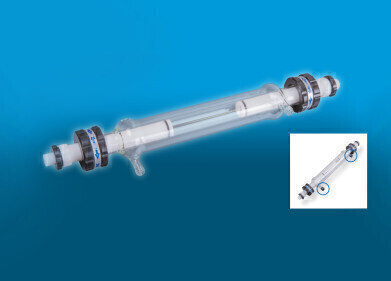LCxLC
How is LC-NMR Used?
Mar 23 2022
LC-NMR is one of the many hyphenated techniques used by researchers to identify and quantify the components that make up different substances. Read on as we take a closer look at this method, how it works, and some of the ways it’s used.
What is LC-NMR?
LC-NMR is a combination of two techniques – liquid chromatography (LC) and nuclear magnetic resonance (NMR). Technically speaking, the liquid chromatography in question also refers to high-performance liquid chromatography (HPLC) and ultra-high performance liquid chromatography (UHPLC).
In terms of how the two work together, LC separates components depending on the speed at which they pass through the stationary phase. A more in-depth review of LC capabilities is available in the article ‘Comprehensive Separation Technologies Applied to the Petrochemical Industry’.
NMR adds to this by quantifying each component. A magnetic field causes atoms’ nuclei to resonate at specific frequencies. Those frequencies are measured on an NMR spectrum, which shows the number of nuclei resonating at each frequency (represented by the height of peaks on a graph).
In comparison to other identification and quantification methods, LC-NMR is advantageous because it can distinguish between structural, conformational or optical isomers. It’s also non-destructive and suited to both volatile and non-volatile buffers.
In many cases, the method is combined with mass spectrometry (MS) – resulting in LC-NMR/MS. Mass spectrometry measures the mass-to-charge ratio of molecules in a sample. This provides even more information on the structure of each identified component.
Applications of LC-NMR
Because of its high performance and functionality, LC-NMR has a number of applications. One is the analysis of food and drink products. A team of researchers wanted to study the carbohydrates in beer, but found that NMR alone was hindered by a strong spectroscopic overlap.
Instead, they used LC-NMR/MS – adding the power of mass spectrometry into the mix. In doing so, they found significantly different oligosaccharide compositions, owing to different production conditions.
Drug discovery is another common application, where LC-NMR/MS provides structural data on the metabolites of novel drugs during development. The technique can be used to identify candidate drugs from complex mixtures within a drug discovery strategy.
In addition, LC-NMR has been used in the separation and identification of natural products originating from plants. The technique provides a rapid overview of major components from plants and other natural product sources. That’s often combined with MS for the unambiguous structure assignment of novel compounds of unexpected structural types.
Events
May 11 2025 Vienna, Austria
May 18 2025 Tempe. AZ, USA
May 21 2025 Birmingham, UK
Jun 01 2025 Baltimore, MD, USA
Jun 15 2025 Bruges, Belgium














